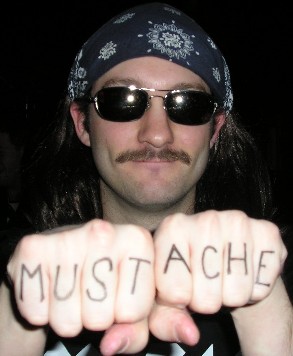Sosa: Is This Guy For Real?
Short answer, no.
Jorge Sosa, a reclamation project signed over the winter, started the year in Triple-A, but since getting called up has gone 6-1 in seven starts with a 2.64 ERA. That’s pretty freaking good. But is he really this good, or is he just lucky?
Sosa came up in 2002 as a 23-year-old and had a few mediocre-to-bad years with the Devil Rays before getting traded to the Braves in 2005. He had one great season in 2005, going 13-3 with a 2.55 ERA. After pitching guru Leo Mazzone left the Braves in 2006, new pitching coach (and former Met/second spitter) Roger McDowell turned the knob back to ‘suck,’ and Sosa had a crummy four months starting for the Braves before he got traded to the Cardinals for a bag of magic beans, then had a crummy two months pitching out of the Cardinal bullpen. The Cards left him off their post-season roster, and did not try to re-sign him after becoming the worst team to ever win a World Series.
The Mets took a flyer on Sosa this winter, and after a crummy spring training he was assigned to Triple-A. Then, Pelfrey stunk up the joint, the Mets called up Sosa, and he’s been pitching great ever since. So, is he this good?
The answer, of course, is no. He’s lucky. Below you’ll find four graphs of Sosa’s career peripheral numbers (peripheral numbers, like strikeouts per nine innings pitched or strikeout-to-walk ratio, are frequently better predictors of pitcher success than their ERA or win-loss record, which can be greatly affected by luck).
 Frankly, his numbers just aren’t that good, including this year, even with his 2.64 ERA. Except for 2004, Sosa has never struck guys out at a better than league-average pace. He has managed to limit the walks this year and in 2006; but his strikeout-to-walk ratio is barely league-average. Sosa is a flyball pitcher (almost 50% of the balls put in play against him are fly balls) who doesn’t strike many guys out, but doesn’t walk many, either. Which means that he is going to live and die based on how many of those fly balls turn into big fly balls, i.e. home runs.
Frankly, his numbers just aren’t that good, including this year, even with his 2.64 ERA. Except for 2004, Sosa has never struck guys out at a better than league-average pace. He has managed to limit the walks this year and in 2006; but his strikeout-to-walk ratio is barely league-average. Sosa is a flyball pitcher (almost 50% of the balls put in play against him are fly balls) who doesn’t strike many guys out, but doesn’t walk many, either. Which means that he is going to live and die based on how many of those fly balls turn into big fly balls, i.e. home runs.And unfortunately, pitchers don’t have a lot of control over that. Around 11% or 12% of fly balls get turned into home runs, on average. If a pitcher’s home run-to-fly-ball ratio is significantly higher or lower than that, it’s probably due to luck. Sosa’s HR/F rate this year: 7.4%. Which means I expect a fairly significant regression to the mean. In Sosa’s case, the mean is ‘sucky.’
Of course, this might be a brilliant move on GM Omar Minaya’s part. Shea Stadium is definitely a pitchers’ park, and with its spacious outfield, it’s particularly good at limiting home runs.


0 Comments:
Post a Comment
<< Home